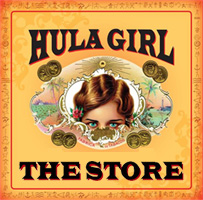For more than 100 years, beginning in the 18th century, the cultivation and sale of tobacco in the Philippine islands was the exclusive prerogative of the Spanish colonial government. The tobacco monopoly successfully raised revenues for the colonial government and made the Philippine tobacco famous all over Asia. Aside from being an enduring symbol of Filipino-Hispanic relations, the Philippine tobacco is also considered one of the best and healthiest by connoisseurs all over the world.
In certain parts of the Philippine Islands, the climatic and soil conditions are exceptionally favorable for the making of a superior grade of tobacco. The province of La Union, in the southwestern Ilocos Region in northern Luzon, has a predominantly hilly terrain that rises eastward from the shore. La Union was carved out from the nine towns of Pangasinan, three of Ilocos Sur and villages of Benguet in the Cordilleras. It was formally created by a royal decree issued by Queen Isabella of Spain in the early 1850s.
Tobacco is one of the principal products grown extensively in the province. The other crops are rice, banana, coconut, mango, corn, garlic, sugarcane, cassava, and grapes, among others. Government and private sector collaborations have also focused on the production of cacao, coffee, and processed fruits.
La Union is the principal economic nucleus of the Ilocos region. Investors have taken advantage of the skilled craftsmen to create an assortment of handicrafts, decorative items, and other products for the export market. The favorable climate in the highlands of La Union presents many possibilities for industries.
Hula Girl tobacco grown in the company's farm in La Union delivers a rich, flavorful, and delightful taste profile.
TOBACCO FARM LA UNION

